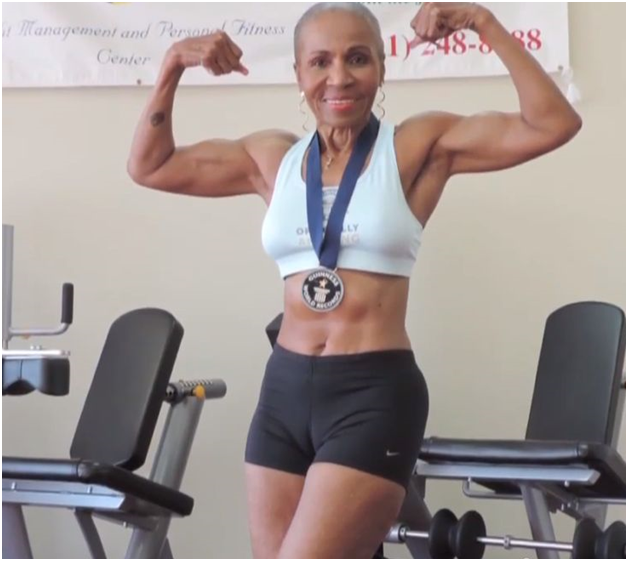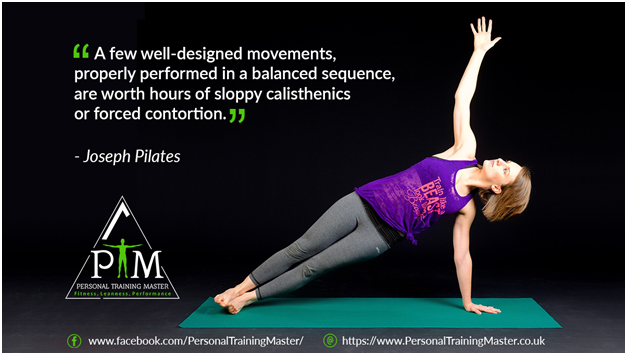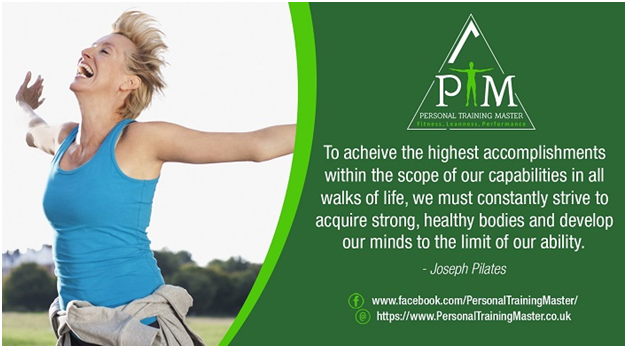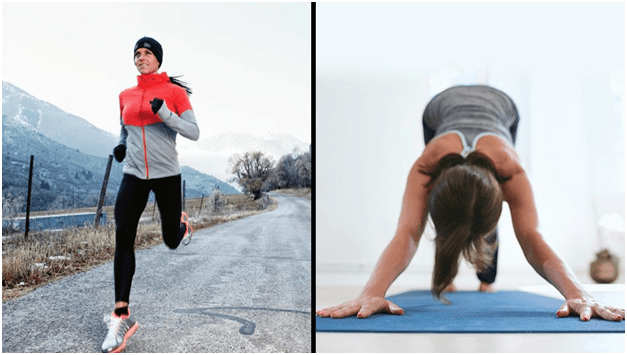Menopause
Every woman undergo through this process – but, why the effects will vary?
Menopause can be defined as a permanent termination of menstrual periods, determined retrospectively after a woman has experienced 12 months of menstruation absence without any other obvious pathological or physiological cause.
It most usually occurs at an average age of 51 years[11].
Menopause and hormonal changes
You might know already that the reduction of estrogen hormone levels that woman experiences at menopause represent the natural state for every women.
When women are young, higher levels of estrogen are produced which allow for ovulation and the possibility of pregnancy.
However, beyond the reproductive age years, these higher levels are no longer necessary to you [11].
With the cessation of follicular functioning and the decline of follicles and estrogen production,you will exhibit a variety of symptoms including:
- hot flushes
- sleep disturbances and mood changes
- bleeding problems
- local urogenital problems
- thinning of the vaginal mucosal epithelium and atrophy of vaginal wall smooth muscle
- vaginal dryness and increased vaginal pH
- reduction in pelvic muscle tone
- increased sensitivity to pain
Many of these symptoms can have a direct effect on your sexual functioning[11].
Click here for a FREE CONSULTATION today!
Menopause women and sexual function
Estrogen deficiency leads to a decrease in blood flow to the vagina and vulva.
This decline is a main cause of decreased vaginal lubrication and sexual dysfunction in menopausal women.
Vaginal dryness may also contribute to reduced sexual function.
The cervix may atrophy and become flush with the top of the vaginal vault.
The vaginal wall may lose elasticity, and the entire vagina can become shorter or narrower.
However, continuing sexual activity may prevent these changes in size and shape of the vagina, even in the absence of estrogen therapy[12].
Hormonal replacement therapy may also be beneficial [12].
Menopause women and depression
A number of reports indicate that there is a significant increased risk of new-onset depression in women during the menopausal transition compared with their pre-menopausal years.
The risk then decreases in the early post menopause.
A diagnosis of depression is 2.5 times more likely to occur in the menopausal transition compared to pre-menopausal women [13].
Menopause women and sleep disturbance
A very distressing feature during menopause is that hot flashes are more common at night than during the day and are associated with arousal from sleep.
However,
Menopause women experience sleep disturbances even in the absence of hot flashes.
The estimated prevalence of difficulty sleeping based upon two studies is 32 to 40 % in the early menopausal transition, increasing to 38 to 46 % in the late transition [14].
Anxiety and depression symptoms may also contribute to sleep disturbances.
In addition, perimenopausal women with hot flashes are more likely to be depressed [14].
Menopause women and joint pain
Joint aches and pain are a commonly reported symptom among women at midlife with a reported prevalence as high as 50 to 60%.
Women who are obese or depressed are more likely to experience joint pain[15].
However, it is unclear if the pain is related to estrogen deficiency or a rheumatologic disorder, but women with joint pain are more likely to get relief with either combined estrogen replacement therapy [16].
Menopause women and weight gain
In the early postmenopausal years, women who do not take estrogen therapy typically gain fat mass and lose lean mass.
Some studies suggest that postmenopausal hormone therapy is associated with a decrease in central fat distribution.
Although women typically gain weight during midlife, it does not appear to be due to menopausal status or stage[17].
Menopausal women and skin changes
Estrogen deficiency after menopause causes reduced collagen content of the skin and bones.
Decreased cutaneous collagen may lead to increased ageing and wrinkling of the skin.
Limited data suggest that collagen changes may be minimised with estrogen replacement therapy [18].
Would you Like Looking Younger?
Click here for a FREE CONSULTATION today!
Turn the ageing clock backwards with exercise and activity!
Anti-ageing exercises that can help in easing out the menopausal phase, help in:
- muscle gain,
- elevate mood and briefly describe a few mood elevating mechanisms,
- toning muscles,
- promotes healthy skin,
- Controls weight.
Resistance training can help you decrease your fat weight and increase yourlean weight
Excessive body fat is associated with risk factors such as elevated plasma cholesterol, plasma glucose, and resting blood pressure.
These contribute to the development of type 2 diabetes and cardiovascular disease.
In ageing women, resistance training studies have consistently demonstrated significant increases in lean weight and metabolic rate, accompanied by significant decreases in fat weight.
Thus, customised resistance training is recommended in the management of obesity and metabolic disorders.
Different resistance training studies showed that approximately 1.4 kg of lean weight gain also reported approximately 1.8 kg of fat weight loss [19].
Resistance training may also lead to abdominal fat reductions in women[19].

Ernestine Shepherd 82 year old.
Cardio for your cardiovascular health
Cardio training improves our body’s ability to use oxygen to produce energy needed for movement.
Cardiac rehabilitation is safe for patients with stable coronary heart disease, as long as it is assessed properly and the training programme is fully tailored to their needs.
With a customised exercise prescription designed by your elite personal trainer in London, you can expect to manage or even reduce the disease load, improve oxygen intake, physical function, exercise tolerance, and quality of life.
Click here for a FREE CONSULTATION today!
When designing the training programme, your personal trainer should take into account the individual’s exercise capacity and risk profile, and in a safe manner (SAFE is the key word) aim to reach and maintain the individual’s highest possible fitness level.
In patients with coronary heart disease, I might recommend to build up to 15-60 minutes per day, on 3-5 days per week, of moderate intensity exercise (e.g. brisk walking).
If the client is severely affected the total may be completed in shorter sessions of 5-10 minutes and accumulated throughout the day[20, 21].
Aerobics and weight bearing exercise are beneficial for osteoporosis
High impact activities are the best exercises to stimulate bones and prevent osteoporosis in ageing women.
Women with osteoporosis however need to exercise with caution in order to prevent further trauma fractures during high impact loading.
Instead, activities to improve leg muscle function and overall balance such as Pilates, Tai Chi, line dancing, stair climbing and low impact aerobics can be successfully adopted to prevent falls and risk of fracture[20, 21].
Therefore, all of this exercises need to be done under the supervision of an elite London personal trainer.
Activities that involve notable twisting (golf) or abrupt movements (squash) are risky but, not if you are safely trained, movements are coordinated and your core is strong.
Time spent routinely sitting in front of a computer and lying down during the day should be eliminated or minimised!
Customised Pilates for overall wellness
Pilates belong to the group of low intensity physical activities, which helps people to use small, seldom-used muscles without moving their bodies actively.
It uses a step-by-step practice of specific exercises designed to strengthen, stretch and balance the body.
These exercises are taught along with proper breathing techniques.
The proven benefits of customised Pilates include:
- Improved balance
- Coordination and circulation
- Improved performance in sports
- Increased lung capacity and circulation
- Strength and flexibility
- Increased posture
- Increases core strength/stability and peripheral mobility
- Improved bone density
- Joint health and positive body awareness
- Improves postural problems
- Longer, leaner muscles[22].
Studies have showed that Pilates exercises program of 12 weeks may significantly improve elderly’s wellness such as physical, social, spiritual and emotional wellness.

Customised Pilates may also reduce the stress and symptoms of depression in ageing women [23].
Pilates can be also used alone or together with sport training, rehabilitation and dance[22].
Many professional performers such as Beyonce, Miley Cyrus and Madonna swear by the dance-like exercises of Pilates for increasing their endurance, strength, flexibility and overall fitness.
Customised Yoga has many proven health benefits
Yoga is an increasingly popular mind and body practice used for health promotion and amelioration of a variety of conditions.
For example, a weekly yoga supervised programme has been shown to be acceptable, and safe for older women with knee osteoarthritis, and reveals therapeutic benefits [24].
In ageing women, customised yoga is also highly reputed to:
- Improve balance
- Increase muscle strength and flexibility
- Improve balance and mobility
- Reduce the risk of falls
- Reduce the stress and anxiety
- Improve cognitive function
- Reduce pain and inflammation [25].

Personal trainer can help women in coping with menopause and pitfalls associated with it
Women are under appreciated brokers of health.
The choices women make for themselves and their families really do inspire and influence not just their own health, but the health of many others.
However, to achieve your personal health goals, you will do much better with professional support from an elite personal trainer in London.
Your elite trainer will assess your full health history, past and current lifestyle influences, stress levels, genetics, injury status and coach you for success.
An elite trainer will design a special exercise programme just for you and safely supervise your progress.
Your programme might be modified roughly on every 4-10 weeks depending on your abilities, goals, and other requirements.
Moreover, a personal trainer will also educate you and recommend you a suitable and effective nutrition plan based on your health status, current body composition, metabolism, and other goals.
Would you like to burst with energy, look younger and feel healthier?
Click here for a FREE CONSULTATION today!
Reference:
- Mann JFE, Bakris GL. Patient education: High blood pressure in adults (Beyond the Basics). In: Kunins L, ed. UpToDate. Waltham, Mass.: UpToDate, April 2019. https://www.uptodate.com/contents/high-blood-pressure-in-adults-beyond-the-basics
- McCulloch DK. Effects of exercise in adults with diabetes mellitus. In: Mulder JE, ed. UpToDate. Waltham, Mass.: UpToDate, April 2019.https://www.uptodate.com/contents/effects-of-exercise-in-adults-with-diabetes-mellitus
- Pescatello, L., Arena, R., Riebe, D., & Thompson, P. (2013). General Principles of Exercise Prescription. In ACSM’s Guidelines for Exercise Testing and Prescription (9th ed., pp. 166-177). Philadelphia: Wolters Kluwer Health/Lippincott Williams & Wilkins.http://exerciseismedicine.org/assets/page_documents/EIM%20Rx%20series_Exercising%20with%20Osteoarthritis.pdf
- Rosen HN, Drezner MK. Overview of the management of osteoporosis in postmenopausal women. In: Mulder JE, ed. UpToDate. Waltham, Mass.: UpToDate, April 2019.https://www.uptodate.com/contents/overview-of-the-management-of-osteoporosis-in-postmenopausal-women
- Berkeley Wellness (2012). New tricks for old bones. Updated 2017. Retrieved from http://www.berkeleywellness.com/fitness/exercise/article/new-tricks-old-bones
- Bailey CA, Brooke-Wavell K. Optimum frequency of exercise for bone health:randomised controlled trial of a high-impact unilateral intervention. 2010;46(4):1043-9.https://www.ncbi.nlm.nih.gov/pubmed/20004758
- Sullivan J, Feigenbaum J, Baraki A. Strength training for health in adults: Terminology, principles, benefits, and risks. In: O’Connor FG, ed. UpToDate. Waltham, Mass.: UpToDate, April 2019.https://www.uptodate.com/contents/strength-training-for-health-in-adults-terminology-principles-benefits-and-risks
- Hearing CM, Chang WC, Szuhany KL, Deckersbach T, Nierenberg AA, Sylvia LG. Physical Exercise for Treatment of Mood Disorders: A Critical Review. CurrBehavNeurosci Rep. 2016;3(4):350–359. https://www.ncbi.nlm.nih.gov/pmc/articles/PMC5423723/
- Simon G. Patient education: Depression treatment options for adults (Beyond the Basics). In: Solomon D, ed. UpToDate. Waltham, Mass.: UpToDate, April 2019.https://www.uptodate.com/contents/depression-treatment-options-for-adults-beyond-the-basics
- Jaret P (2011). Exercise for Healthy Skin. Retrieved from https://www.webmd.com/skin-problems-and-treatments/acne/features/exercise#1
- Schwenkhagen A. Hormonal changes in menopause and implications on sexualhealth. J Sex Med. 2007 Mar;4 Suppl 3:220-6.https://www.ncbi.nlm.nih.gov/pubmed/17394594
- Cutler WB, Garcia CR, McCoy N. Perimenopausal sexuality. Arch Sex Behav. 1987;16(3):225-34.https://www.ncbi.nlm.nih.gov/pubmed?term=3606379
- Freeman EW, Sammel MD, Lin H, Nelson DB. Associations of hormones andmenopausal status with depressed mood in women with no history of depression.Arch Gen Psychiatry. 2006;63(4):375-82. https://www.ncbi.nlm.nih.gov/pubmed?term=16585466
- Freedman RR, Roehrs TA. Sleep disturbance in menopause. 2007;14(5):826-9. https://www.ncbi.nlm.nih.gov/pubmed?term=17486023
- Dugan SA, Powell LH, Kravitz HM, Everson Rose SA, Karavolos K, Luborsky J.Musculoskeletal pain and menopausal status. Clin J Pain. 2006;22(4):325-31.https://www.ncbi.nlm.nih.gov/pubmed?term=16691084
- Barnabei VM, Cochrane BB, Aragaki AK et al. Women’s HealthInitiative Investigators. Menopausal symptoms and treatment-related effects ofestrogen and progestin in the Women’s Health Initiative. Obstet Gynecol. 2005;105(5 Pt 1):1063-73.https://www.ncbi.nlm.nih.gov/pubmed?term=15863546
- Sternfeld B, Wang H, Quesenberry CP Jr et al. Physical activity and changes in weightand waist circumference in midlife women: findings from the Study of Women’sHealth Across the Nation. Am J Epidemiol. 2004;160(9):912-22. https://www.ncbi.nlm.nih.gov/pubmed?term=15496544
- Brincat M, Versi E, Moniz CF, Magos A, de Trafford J, Studd JW. Skin collagen changes in postmenopausal women receiving different regimens of estrogen therapy.Obstet Gynecol. 1987;70(1):123-7.https://www.ncbi.nlm.nih.gov/pubmed?term=3601260
- Westcott WL. Resistance training is medicine: effects of strength training on health. Curr Sports Med Rep. 2012;11(4):209-16. https://www.ncbi.nlm.nih.gov/pubmed/22777332
- Nystoriak MA, Bhatnagar A. Cardiovascular Effects and Benefits of Exercise. Front Cardiovasc Med. 2018;5:135. https://www.ncbi.nlm.nih.gov/pmc/articles/PMC6172294/
- Agarwal SK. Cardiovascular benefits of exercise. Int J Gen Med. 2012;5:541–545. https://www.ncbi.nlm.nih.gov/pmc/articles/PMC3396114/
- Hoppens D. Pilates Principles. CEC article. 2003. Retrieved from http://www.aquacert.org/cec32003.pdf
- Roh SY. The effect of 12-week Pilates exercises on wellness in the elderly. J ExercRehabil. 2016;12(2):119–123. https://www.ncbi.nlm.nih.gov/pmc/articles/PMC4849491/
- Cheung C, Wyman JF, Resnick B, Savik K. Yoga for managing knee osteoarthritis in older women: a pilot randomized controlled trial. BMC Complement Altern Med. 2014;14:160. https://www.ncbi.nlm.nih.gov/pmc/articles/PMC4038088/
- Fishbein DB, Saper RB. Overview of yoga. In: Kunins L, ed. UpToDate. Waltham, Mass.: UpToDate, April 2019.https://www.uptodate.com/contents/overview-of-yoga



